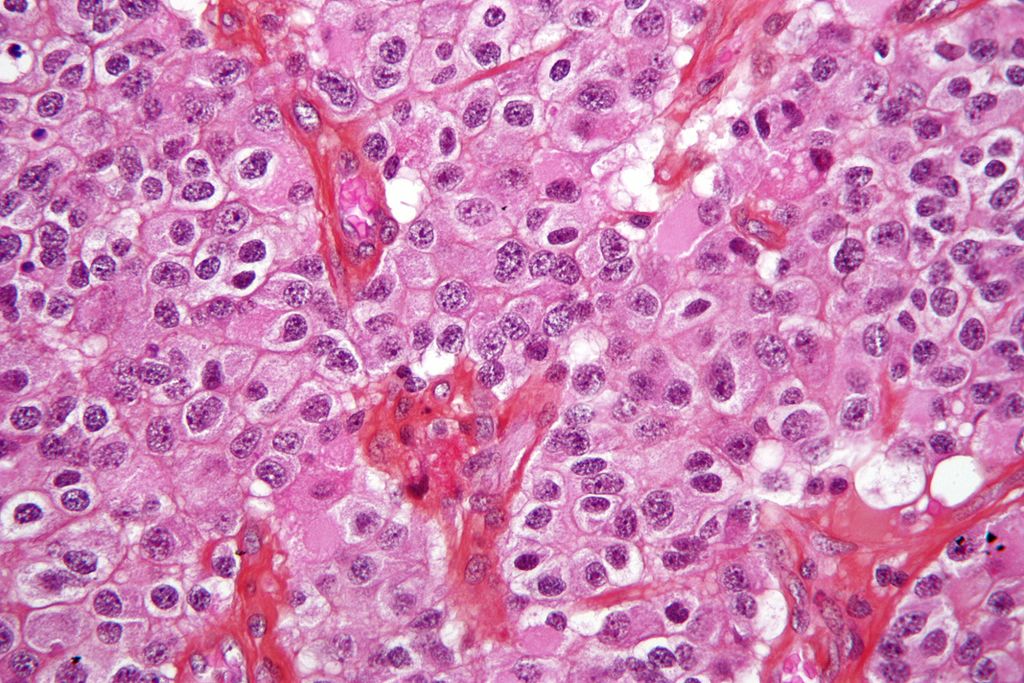
Detailed analysis of two brain tumor subtypes has revealed that they may originate from the same type of neural progenitor cells and may be distinguished by gene mutation patterns and by the composition of their microenvironments.
The results of the study, led by Harvard Medical School investigators at Massachusetts General Hospital and collaborators at the Broad Institute of MIT and Harvard, were published in the March 31 issue of Science.
“Our study redefines the cellular composition of two closely related gliomas characterized by mutations in the IDH gene—astrocytomas and oligodendrogliomas,” said Mario Suvà, HMS assistant professor of pathology at Mass General, and co-senior author of the Science paper. “While we know these are genetically distinct tumor types, we did not know whether they had similar cells of origin or if their expression differences could be explained by genetics, by the cells from which they developed or by the tumor microenvironment.”
Several recent studies, including The Cancer Genome Atlas, have identified mutations driving tumor growth and defined tumor subtypes based on analyzing gene expression in tissue samples that include both tumor cells and cells from the surrounding microenvironment. But the fact that these analyses are done in bulk pieces of tumors masks many critical pieces of information.
Single-cell RNA sequencing, which measures RNA transcription on a cell-by-cell basis, offers detailed insights into tumor biology, but can be done only in a limited number of tumors due to financial and logistic constraints. The Mass General team hypothesized that combining single-cell RNA data from a limited number of tumors with existing bulk expression data from large study groups could reveal many key aspects of brain tumor biology.
Both astrocytomas and oligodendrogliomas are considered incurable, but surgery and radiochemotherapy can significantly extend survival. The tumors are believed to develop from subtypes of the glial cells that support and protect neurons, and are known to differ in terms of genetics, appearance and gene expression. While both types of tumor contain cells similar to the glial cells for which they are named—astrocytes and oligodendrocytes—they also each contain markers of both cell types, calling into question the common belief that they originate in those distinct cell types.
Combining RNA sequencing results from more than 9,800 cells from 10 astrocytomas and more than 4,300 cells from six oligodendrogliomas with 165 bulk expression profiles from The Cancer Genome Atlas revealed that both types of tumor contained three different types of cancer cells: nonproliferating cells that have differentiated into either astrocyte- or oligodendrocyte-like cells, as well as cells that resemble neural stem or progenitor cells and drive tumor growth. Differences between the two types of tumor appear to be determined primarily by genetic differences and in the composition of the tumor microenvironment, such as the abundance of specific immune cells.
“We were surprised to find that cancer cells from these two tumor subtypes share similar stem cell programs and glial lineages of differentiation,” Suvà said. “Additionally, we observed that cancer cells that become more differentiated do not proliferate, even in more advanced tumors. That suggests that pushing cells towards differentiation—something we currently do not know how to do in patients—could significantly halt tumor growth.
“As these tumors share stem cell programs that drive their growth, an alternative approach could be to target specific cell types with immunotherapies,” Suvà added. “We now plan to use similar approaches to study other types of adult and pediatric gliomas to get additional insight into their origins and the programs driving their aggressiveness.”
Support for the study includes the Smith Family Foundation, the V Foundation for Cancer Research, the American Cancer Society, the National Cancer Institute, the Rachel Molly Markoff Foundation, the Howard Hughes Medical Institute and the Klarman Family Foundation.
Adapted from a Mass General news release.


